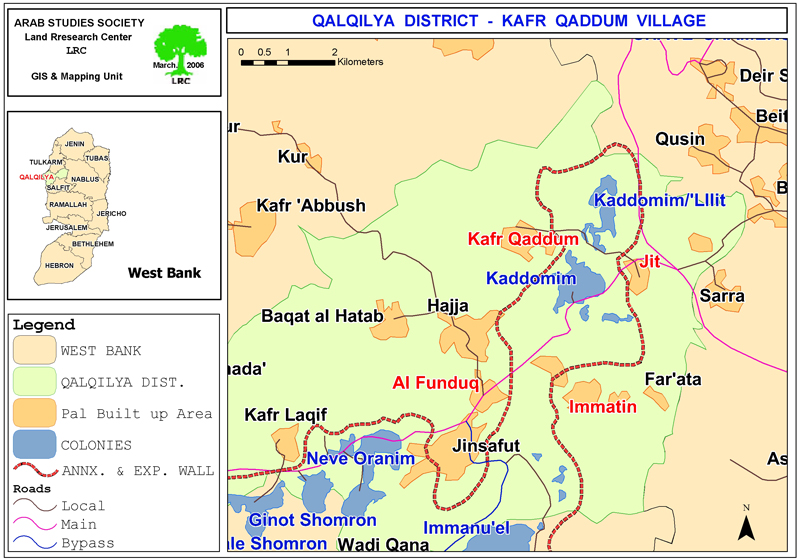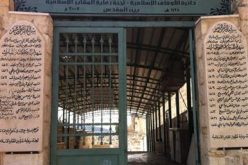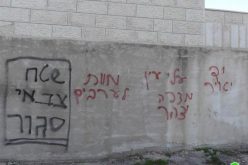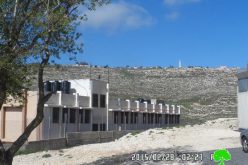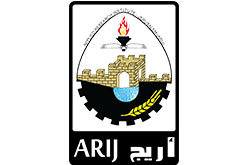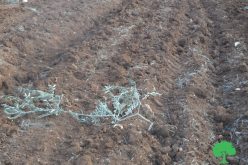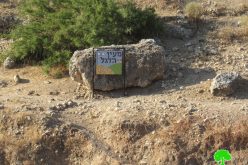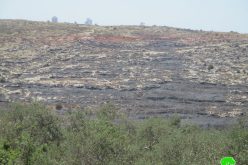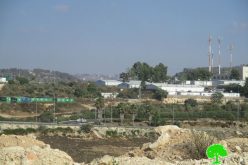Israeli settlers and army soldiers renew their attacks against Palestinian farmers in Kafr Qaddum
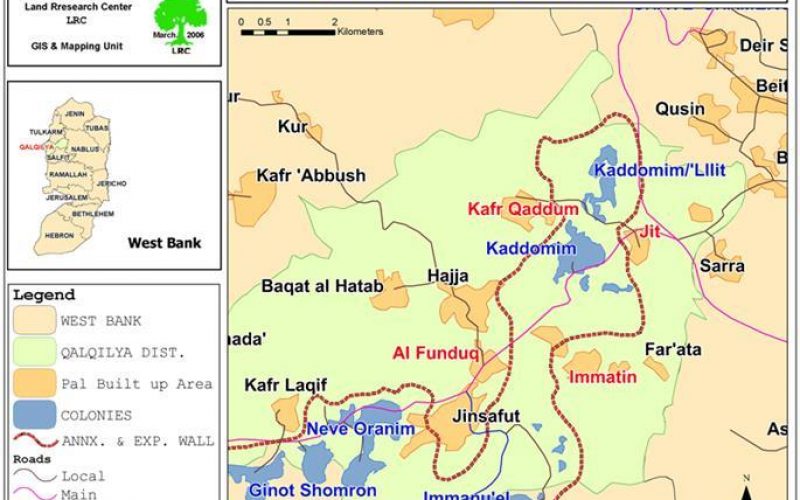
Groups of armed settlers and soldiers in official uniform intensified their acts of provocation against the Palestinian land owners and farmers trying to reach their fertile agricultural fields east and south of the village. The farmers own about 350 dunums cultivated with ground seasonal crops and olive trees in these two areas which are located about 300 meters from the settlements of Kedumim pausing no danger to the settlements' security as the Israeli occupation usually claims.
The farmers have been intimidated by live and rubber fire shoots, sound bombs and chasing so as to force them out of the target area. Also, the settlers protected by army soldiers continue to destroy crops, uproot trees and damage terraces and retaining walls and all sorts of agricultural installations in the area. In addition, dozens of wild pigs were introduced into the area by the Israeli occupation authorities with the aim of destroying Palestinian agriculture.
The village local council had extended many warnings and appeals to the International Committee of the Red Cross (ICRC), the District Coordination Office (DCO) in Qalqiliya against the settler's attacks and violations, but to no avail.
Location and Population:
The village of Kafr Qaddum is located 13 kilometers south west of the city of Nablus and 22 kilometers east of the city of Qalqilyia. The latest statistics indicate that the population of the village stands at 3,500 individuals. See Map 1
Map 1: The village of Kafr Qaddumim blocked from east and
south with the settlements of Kadommim), Map prepared by LRC
Before the current Intifada about 50% of the families of the village used to depend on working inside of Israel as the main source of income, 20% depended on agriculture and animal rising, while 30% depended on jobs in the private and public sectors. Yet after the year 2002 more than 75% of the population became jobless as business became the only other alternative for income generation.
It is noteworthy that, according to the village council, more than 150 families in the village depend on assistance from governmental organizations and charitable societies in making ends meet.
Surface Area:
The village's original total surface area is 17161 dunums of which 529 dunums are built up area. About 7,000 ( 40%) of its original land is under Israeli settlement control (the settlers of Kaddomim and Kaddomim Illit). The reaming lands are distributed as follows:
-
80% are planed with Roman olive trees.
-
15% are used for vegetation purposes.
-
5% are planted with crops.
The settlements of Kaddomim was established in 1975 and then extended north and south to become one of the biggest settlers in the occupied West Bank. During this on going expansion process, the settlements of Kaddomim Illit (Kaddomim North) as well as the settlements of Jabel Mohammed (Kaddomim South) were also founded at the expense of the lands of the Palestinian village of Kafr Qaddum. At the end of 2004, the total number of settlers living in these three settlers reached 3010, according to the Foundation for Middle East Peace.

Photo 1: the settlements of Kaddomim at the top of the mountain to
the south of Kafr Qaddum villag),Photo courtesy of LRC
Continuous attacks
The village has witnessed an intensified and lasting attack campaign against it since the Israeli occupation of 1967. In addition to the above mentioned violations, the following attacks took place:
1. In January, 2005, settlers from the nearby settlements of Kaddomim attacked and shot at villagers while working in their lands.
As a result, the village council hired a lawyer to prevent such acts from happening again. The only thing the lawyer managed to do was to convince Israeli courts to order the security echelons to issue permits for the villagers allowing them to access their lands and work in it. Such permits were flatly rejected by the villagers as they insisted that they have the deeds and all other necessary documents that proves their ownership of the land in addition to the fact that their lands is about 300 meters from the settlements.
The rejection of the permits created a negative reaction from the Israelis as the Israeli Occupation Army issued a Work Schedule for these lands according to which the land was divided into 9 big sections. Each section can be worked in by the villagers on one pre-specified day despite the fact that only one day is not enough to work the land properly. As such, most of the land was kept without proper care leading to the destruction of the only source of income for 40 families, especially after they have lost their work in the Israeli proper.
Mr. Basem Ali Mutee'a is a good example of Palestinian suffering in the village; He owns 15 dunums in the northwestern parts of the village and is the breadwinner for his 9-individual family. At the beginning of the Intifada he lost his job in the Israeli proper and became dependent solely on working his land as the only source of income. Today he is prevented from accessing his land by a group of vicious settlers leaving him jobless with no source of income to feed his family.
Closing main road
Shortly after the outbreak of the current Intifada in the year 2000, the Israeli occupation forces closed the main Kafr Qaddum- Nablus road under security claims forcing local people to look for alternative roads. One of these agricultural un- paved alternative roads takes a circular route through the villages of Hajja, Al Funduq, Immatin and Jit before reaching the main checkpoint to Nablus city. If takes this, one has to travel 22 km instead of the ordinary 10 km journey.
Lack of basic infrastructure
Over the period of the Israeli military occupation the village was deprived of basic infrastructure projects such as water, electricity, roads, schools, clinics … etc. Moreover, the village built up area remained the same as it was before the occupation of 1967, hence, creating serious problem for natural expansion and population growth, especially towards east and south where the Israeli settlers are located.
A number of solidarity demonstrations were organized in which foreign supporter alongside of the villagers participated. Moreover, a number of studies about the tragic situation in the village were conducted by international humanitarian organizations. Yet, the Israeli violations are still continuing against the Palestinian people, in general, without any international pressure on Israel to stop its aggression.
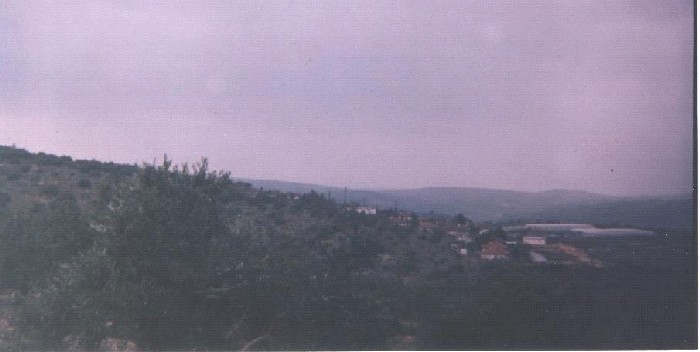
(Photo 2: the settlements of Kaddomim in he middle of olive orchards)
Photo courtesy of LRC
Prepared by


